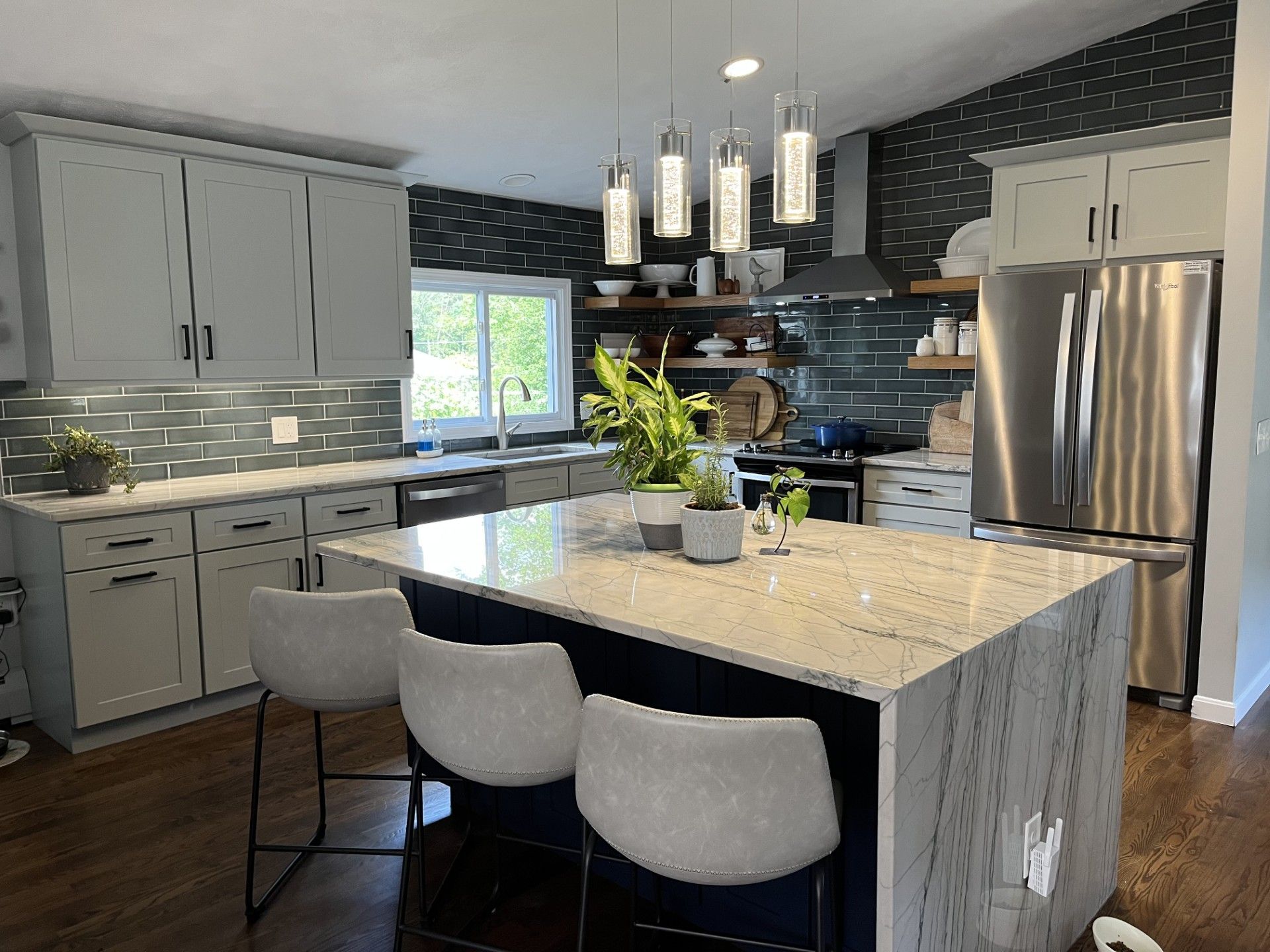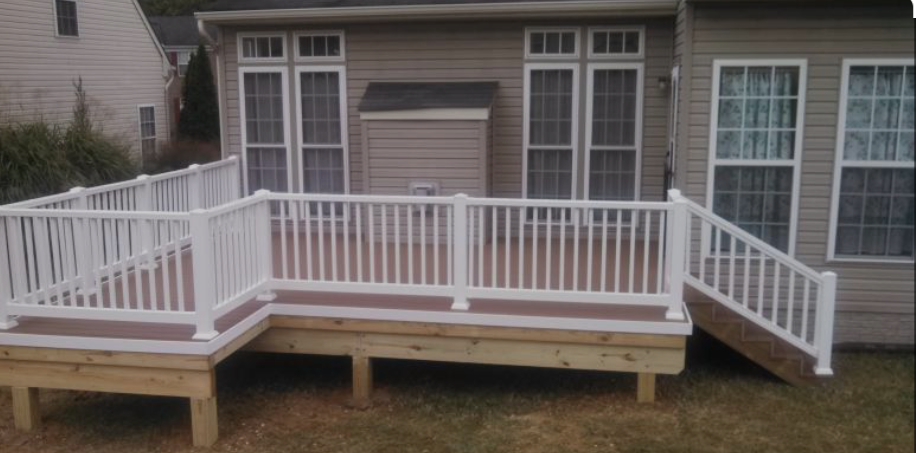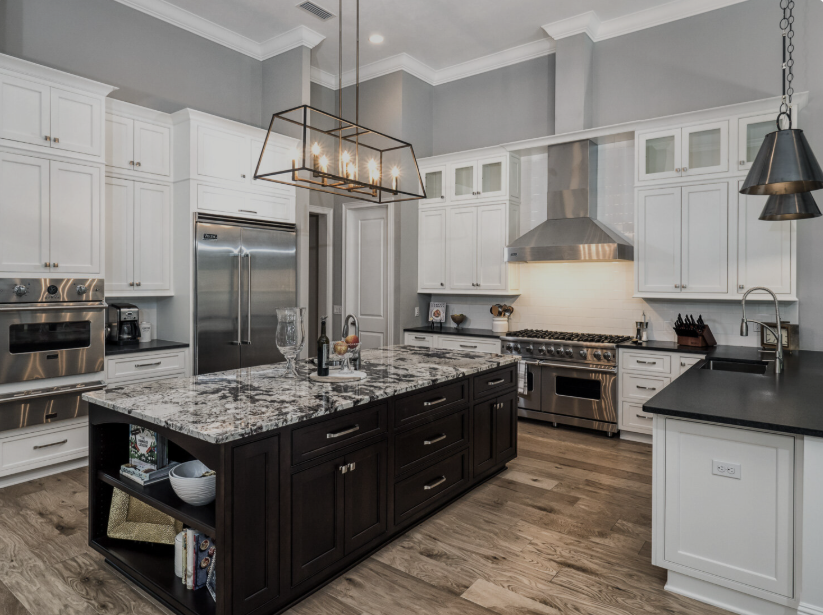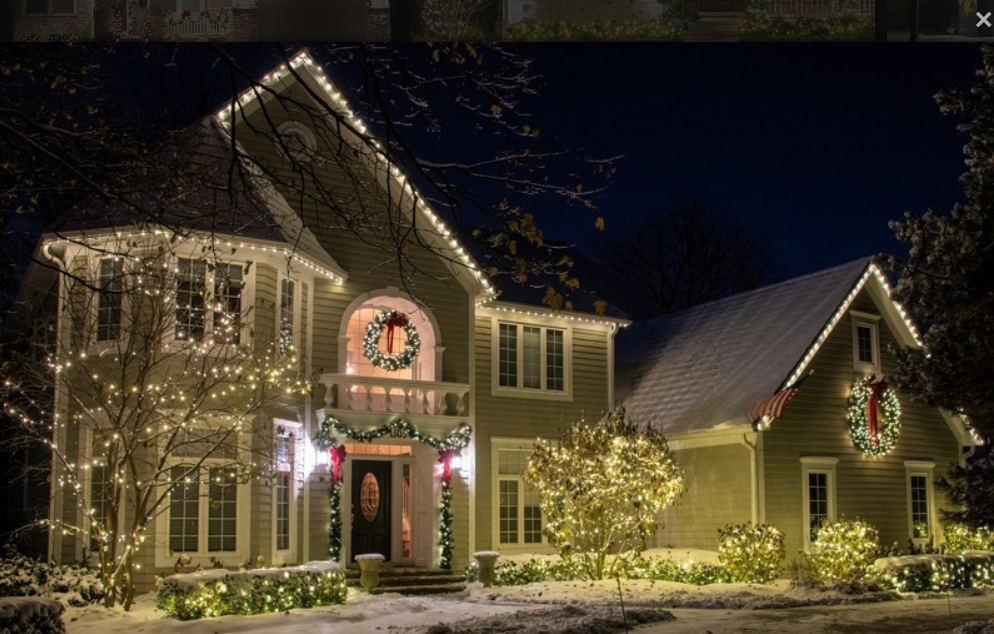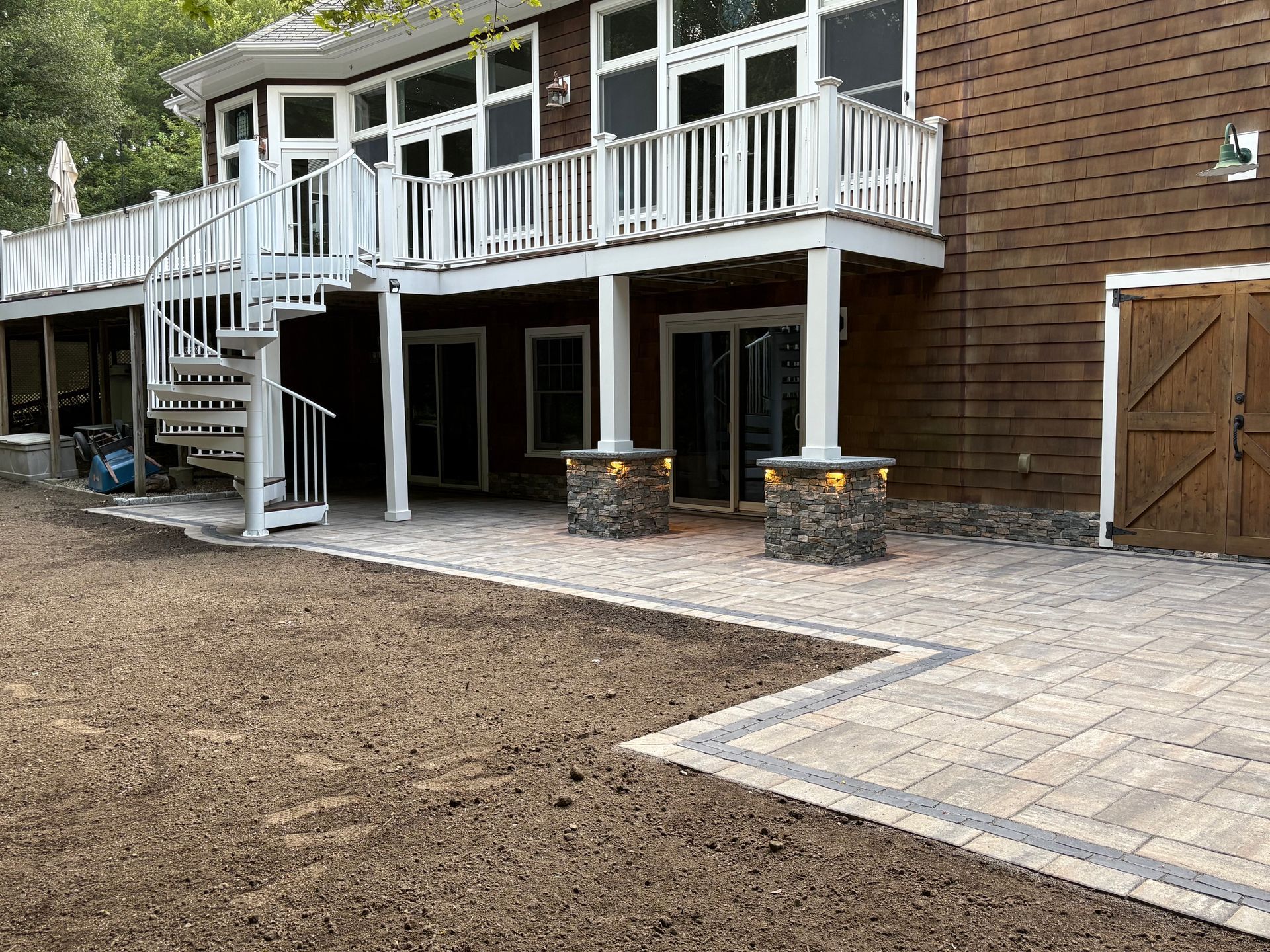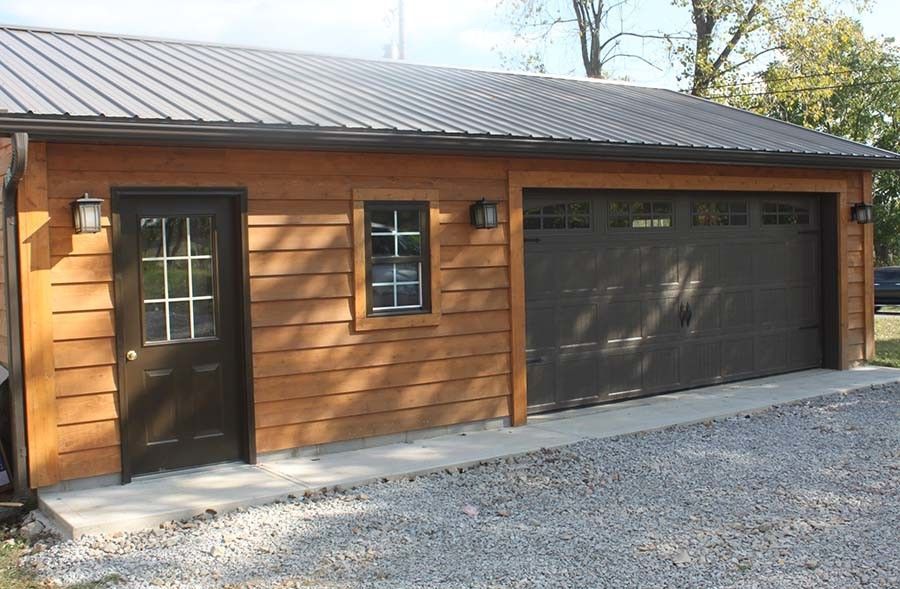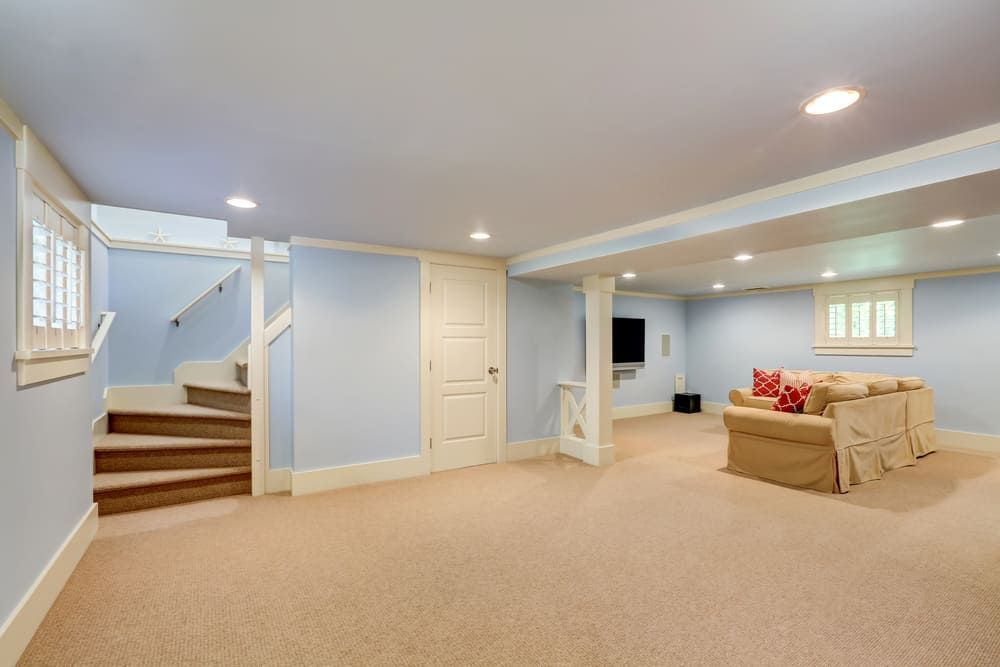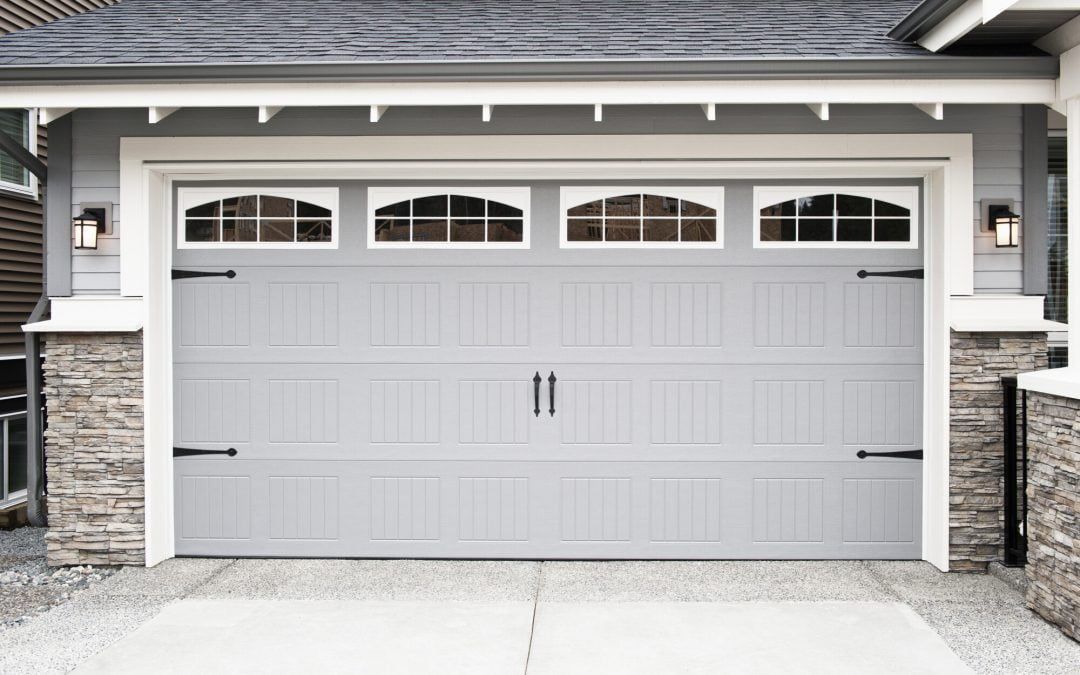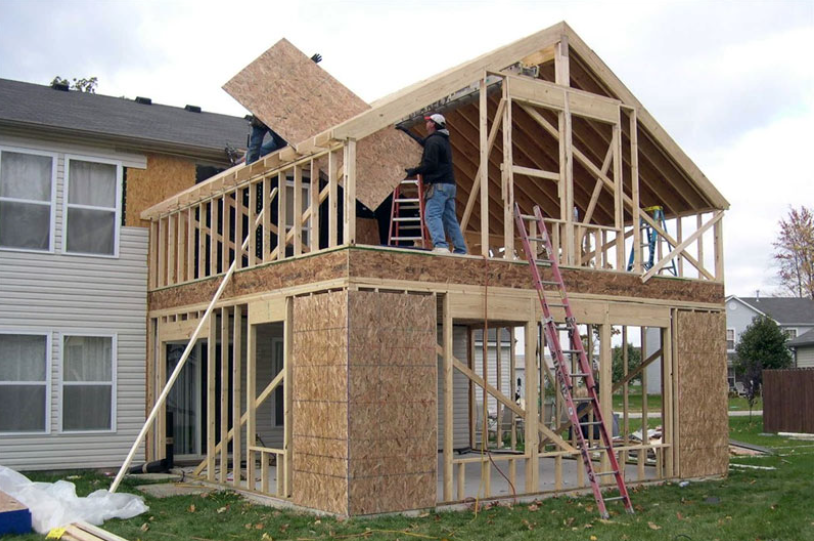By David Antonucci
•
December 1, 2025
If you're planning to build a two-car garage in Providence, Warwick, Cranston, East Greenwich, or anywhere across Rhode Island, you're making a smart investment. A well-designed garage not only protects your vehicles from our harsh coastal winters and humid summers but also adds significant value to your property while providing essential storage and workspace. Rhode Island's unique blend of historic architecture, coastal climate, and compact lots means that garage design requires careful consideration. The best two-car garage designs balance functionality, aesthetics that complement your home's style, efficient use of limited space, and compliance with local building codes and regulations. Standard Two-Car Garage Dimensions for Rhode Island Getting the size right is the foundation of good garage design, and Rhode Island homeowners need to consider both vehicle needs and lot constraints. Minimum Dimensions The absolute minimum for a two-car garage is 20 feet wide by 20 feet deep (400 square feet). However, this tight layout only works for compact vehicles and provides virtually no storage or work space. It's rarely recommended for Rhode Island homes. Comfortable Standard Dimensions Most Rhode Island two-car garages measure 24 feet wide by 24 feet deep (576 square feet). This provides adequate parking for two mid-size vehicles, modest storage along walls, room to walk between cars, and basic workspace potential. Ideal Dimensions for Modern Vehicles Today's SUVs, crossovers, and pickup trucks are larger than vehicles from previous decades. Ideal modern dimensions are 24 feet wide by 26-28 feet deep (624-672 square feet) or 26 feet wide by 24-26 feet deep (624-676 square feet). The extra space accommodates larger vehicles like Ford F-150s, Chevy Tahoes, and Honda Pilots that are increasingly common on Rhode Island roads, provides comfortable door clearance when parked, allows storage along the back wall, and creates workspace without sacrificing parking. Oversized Garages for Storage and Workshops If your lot permits and budget allows, oversized garages offer exceptional functionality. Common oversized dimensions include 24 feet by 30 feet (720 square feet) for substantial storage, 26 feet by 28 feet (728 square feet) for workspace plus parking, and 30 feet by 30 feet (900 square feet) for serious workshop or hobby space. These larger garages work beautifully on suburban and rural Rhode Island properties in communities like Barrington, Scituate, and Exeter where lot sizes accommodate expansion. Garage Height Considerations Standard garage height is 8 feet for basic vehicle clearance, but many Rhode Island homeowners choose 9-10 feet for tall vehicles and better storage, 10-12 feet for overhead storage systems and better proportions, or 12-16+ feet when planning second-story additions. Higher ceilings significantly improve functionality and aesthetics while adding minimal cost during initial construction. Popular Two-Car Garage Styles for Rhode Island Homes Rhode Island's architectural diversity means your garage should complement your home's existing style while meeting functional needs. Colonial Style Garages Colonial architecture dominates Rhode Island, from historic neighborhoods in Providence and Newport to modern colonials throughout the suburbs. Colonial-style garages feature symmetrical design with centered or evenly-spaced doors, traditional architectural details including trim, shutters, and hardware, roof pitches matching the main house (typically 8/12 to 12/12), and classic materials like clapboard siding, cedar shakes, or brick. These timeless designs work beautifully attached or detached and suit properties from Barrington to South Kingstown. Cape Cod and Cottage Style Cape Cod cottages are beloved throughout Rhode Island's coastal communities. Complementary garage designs include lower roof profiles (6/12 to 8/12 pitch), simple, unadorned aesthetics, board-and-batten or shake siding, and dormers for upper storage or bonus rooms. These understated designs blend seamlessly into coastal landscapes while providing excellent functionality. Contemporary and Modern Newer Rhode Island homes increasingly embrace contemporary design. Modern garage features include clean lines and minimal ornamentation, flat or low-slope roofs, mixed materials like metal panels, wood, and stucco, large windows for natural light, and integrated outdoor living spaces. Contemporary garages work particularly well in Providence's revitalized neighborhoods and new developments throughout the state. Carriage House Style Carriage house designs combine parking with upper-level living or storage space. Popular features include garage doors styled to look like barn doors or carriage doors, second-story living quarters, studio space, or home office, dormers and decorative windows, and traditional architectural detailing. These versatile structures are perfect for Rhode Island properties where maximizing square footage is essential, particularly in urban Providence, Pawtucket, and coastal communities. Barn Style and Farmhouse For rural Rhode Island properties and farmhouse-style homes, barn-inspired garages offer rustic charm. Design elements include gambrel or gable roofs, board-and-batten siding, rustic hardware and fixtures, and oversized doors for equipment storage. These designs suit properties in Foster, Glocester, and other rural communities while providing excellent functionality. Attached vs. Detached Garage Designs One of the first decisions Rhode Island homeowners face is whether to attach the garage to their home or build it as a separate structure. Attached Garage Advantages Attached garages offer direct home access (essential during Rhode Island winters), lower construction costs per square foot, shared walls reducing heating costs, and convenient daily use. Urban and suburban Rhode Island properties typically favor attached designs due to lot constraints and convenience factors. Attached Garage Design Considerations When designing attached garages for Rhode Island homes, ensure the garage complements architectural style through matching rooflines, siding, and trim. Proper fire-rated walls between garage and living space meet code requirements. Adequate ventilation prevents carbon monoxide and humidity issues, and the design should maintain the home's curb appeal rather than dominating the facade. Providence, Warwick, and Cranston building codes have specific requirements for attached garages that your contractor must follow. Detached Garage Advantages Detached garages provide separation of noise, fumes, and humidity from living spaces, greater design flexibility without matching home exactly, potential for workshop or hobby space without disturbing household, and preservation of historic home character. Detached designs work beautifully in historic Rhode Island neighborhoods where attached garages would compromise architectural integrity. Detached Garage Design Opportunities Freestanding garages allow for secondary dwelling units above garages (where zoning permits), distinctive architectural statements, flexible positioning on lot for optimal access, and easier future expansion. Check local zoning - Providence, Newport, and many Rhode Island communities have specific regulations regarding detached structures, setbacks, and accessory dwelling units. Garage Door Design Options for Rhode Island Garage doors represent roughly 30% of your garage's street-facing facade, making them critical design elements. Traditional Raised Panel Doors Classic raised panel steel or wood doors suit colonial and traditional Rhode Island homes. Benefits include timeless appearance, wide variety of colors and finishes, excellent insulation options, and moderate pricing ($800-2,000 per door). These doors complement most Rhode Island architectural styles from historic Providence to suburban Warwick. Carriage House Style Doors Faux carriage house doors offer old-world charm with modern convenience. Features include swing-out appearance with overhead operation, decorative hardware and windows, steel, wood, or composite construction, and pricing typically $1,500-3,500 per door. These doors are increasingly popular throughout Rhode Island, particularly in historic districts and upscale communities like East Greenwich and Barrington. Contemporary Flush Panel Doors Modern homes benefit from clean-lined flush panel designs. Characteristics include minimalist aesthetic, aluminum, steel, or glass construction, customizable colors including bold modern hues, and costs ranging from $1,200-4,000+ per door depending on materials. Contemporary doors suit modern Rhode Island homes and recent construction in Providence's revitalized neighborhoods. Full-View Glass Doors Glass garage doors make dramatic statements while flooding interiors with light. Features include aluminum frames with glass panels, frosted, clear, or tinted glass options, modern industrial aesthetic, and pricing from $2,500-5,000+ per door. These work beautifully for garages converted to entertainment spaces or in contemporary designs where natural light is prioritized. Custom Wood Doors For high-end Rhode Island properties, custom wood doors offer unmatched beauty. Benefits include unique designs crafted to specifications, mahogany, cedar, or fir construction, exceptional curb appeal, and investment-level pricing at $3,000-8,000+ per door. Regular maintenance is essential in Rhode Island's coastal humidity, but the aesthetic payoff can be substantial. Insulation Considerations Rhode Island's temperature extremes make insulated doors smart investments. Look for R-value ratings of R-12 to R-18 for climate control, energy efficiency if you heat/cool the garage, and reduced noise transmission. Insulated doors cost 15-30% more but provide year-round comfort and lower energy bills. Interior Layout and Storage Solutions Thoughtful interior design maximizes your garage's functionality beyond simple vehicle parking. Efficient Parking Layouts Standard side-by-side parking works for most situations but consider tandem parking (one behind the other) for narrow lots common in urban Providence, angled parking for easier access on some properties, and asymmetrical layouts for one larger and one smaller vehicle. Wall Storage Systems Maximize wall space with slatwall panels ($8-15 per square foot installed), pegboard systems ($3-6 per square foot), heavy-duty shelving ($150-500 per unit), and tool organization systems ($200-1,000). Rhode Island's humidity makes closed storage preferable for tools and equipment to prevent rust. Overhead Storage Ceiling space often goes unused but offers excellent storage potential. Options include overhead racks for seasonal items ($150-400 installed), ceiling-mounted platforms ($300-800), and pulley systems for bikes and kayaks ($50-200). Overhead storage is particularly valuable on smaller Rhode Island lots where garage space must work harder. Workbench Integration Dedicated workspace transforms garages into functional workshops. Consider built-in workbenches along back or side walls (cost: $300-1,500), modular workbench systems ($500-2,000), and integrated tool storage and power outlets. Position workbenches away from vehicle parking areas to maximize functionality. Climate Control Rhode Island's weather extremes make climate control worth considering. Options include insulation in walls and ceiling ($1,500-4,000), heating systems for winter use ($800-3,000), dehumidifiers for humidity control ($300-1,500), and ventilation fans ($200-800). These investments make garages usable year-round for projects and hobbies. Second-Story Additions and Bonus Rooms Maximizing vertical space provides additional square footage on constrained Rhode Island lots. Garage Apartments Converting garage upper levels into living space is increasingly popular where zoning allows. Typical layouts include studio apartments (400-600 square feet), one-bedroom units (600-900 square feet), and home offices or guest suites. Providence and several Rhode Island municipalities have relaxed accessory dwelling unit regulations, making garage apartments more feasible. Check local zoning carefully and obtain necessary permits. Construction costs typically run $100-200 per square foot for basic finishes to $200-350+ per square foot for high-end appointments. Home Offices Remote work makes garage offices attractive. Design features include separate entrance for clients/privacy, climate control and high-speed internet, natural light through dormers or skylights, and bathroom facilities. Office construction costs $75-150 per square foot depending on finishes and systems. Storage Lofts Simple storage lofts provide maximum storage at minimal cost. Features include open trusses allowing loft construction, pull-down stairs or permanent staircase access, flooring and lighting, and costs typically $3,000-8,000. Storage lofts are perfect for seasonal items, holiday decorations, and long-term storage. Structural Considerations Any second-story addition requires proper foundation and framing to support additional loads, floor trusses or I-joists rated for living loads, adequate ceiling height (minimum 7'6" in Rhode Island), and separate HVAC systems for living spaces. Work with experienced Rhode Island contractors who understand local building codes and structural requirements. Material Choices for Rhode Island Garages Material selection impacts longevity, maintenance, and aesthetics in our coastal climate. Siding Options Vinyl siding ($3-8 per square foot installed) offers low maintenance, wide color selection, and good durability but can fade and crack in extreme temperatures. Fiber cement siding ($6-12 per square foot installed) provides excellent durability, fire resistance, and the appearance of wood without extensive maintenance. It's increasingly popular throughout Rhode Island. Wood clapboard or shakes ($8-15 per square foot installed) offer classic New England aesthetics but require regular painting or staining—plan for maintenance every 3-5 years in Rhode Island's climate. Brick or stone ($15-30+ per square foot installed) delivers timeless beauty, exceptional durability, and virtually no maintenance, making it ideal for high-end Rhode Island properties. Roofing Materials Asphalt shingles ($3-5 per square foot installed) are the standard choice offering good value, 20-30 year lifespan, and wide availability. Architectural shingles ($4-7 per square foot installed) provide enhanced curb appeal, better wind resistance, and 30-50 year warranties. Metal roofing ($7-12 per square foot installed) offers 40-70 year lifespan, excellent snow shedding, and modern aesthetics popular in contemporary Rhode Island designs. Cedar shakes ($8-14 per square foot installed) provide classic New England character but require maintenance and cost more long-term. Foundation and Floor Concrete slab foundations ($4-8 per square foot) are standard, providing durable vehicle support, moisture resistance, and easy cleaning. Epoxy floor coatings ($3-12 per square foot) add chemical resistance, enhanced durability, and attractive finishes. Heated floors ($10-20 per square foot) offer luxury comfort for Rhode Island winters, making garages usable year-round. Windows and Natural Light Strategic window placement provides natural light and ventilation without compromising security or climate control. Consider windows in garage doors (decorative and functional), side wall windows above workbench areas, rear wall windows for cross-ventilation, and skylights or solar tubes for overhead light. Impact-resistant or laminated glass makes sense in coastal Rhode Island areas prone to storm damage. Rhode Island Zoning and Building Codes Understanding local regulations prevents costly mistakes and delays. Setback Requirements Rhode Island municipalities have varying setback requirements. Typical regulations include 5-10 feet from side property lines, 10-20 feet from rear property lines, and 20-30 feet from front property lines. Providence, Warwick, Cranston, and other cities have specific requirements - verify before finalizing garage placement. Height Restrictions Most Rhode Island communities limit accessory structure height to 15-20 feet for single-story garages and 25-35 feet for two-story structures with living space. Historic districts may have more restrictive height limits to maintain neighborhood character. Lot Coverage Limitations Zoning typically restricts total lot coverage (house plus garage plus other structures) to 30-50% of lot area depending on the municipality and zone. Small urban lots in Providence and Pawtucket may already approach coverage limits, constraining garage size. Coastal Considerations Properties within Coastal Resources Management Council (CRMC) jurisdiction face additional regulations. The CRMC oversees properties within 200 feet of coastal features, development in flood zones, and stormwater management requirements. Consult with contractors experienced in coastal Rhode Island construction for these specialized situations. Permit Requirements All Rhode Island municipalities require building permits for new garages. Expect permit costs of $300-1,500 depending on project size, review timelines of 2-8 weeks, and inspections at foundation, framing, and final completion stages. Professional contractors handle permitting, but verify this is included in your contract. Garage Design Features Popular in Rhode Island Modern garages incorporate features that enhance functionality and comfort. Electric Vehicle Charging EV adoption is growing rapidly in Rhode Island. Future-proof your garage with 240-volt circuits for Level 2 charging, dedicated 40-60 amp circuits, and conduit for future upgrades. Installation costs $500-2,000 depending on electrical panel location and capacity. Smart Technology Integration Connected garages offer enhanced convenience and security. Popular features include WiFi-enabled garage door openers, security cameras and motion sensors, smart lighting systems, and integrated home automation. These systems cost $300-2,000 depending on sophistication. Finished Interiors Finished garage interiors provide more pleasant environments. Upgrades include drywall on walls and ceilings ($2-4 per square foot), painted or sealed concrete floors ($1-3 per square foot), LED lighting fixtures ($100-500 total), and climate control systems ($1,500-5,000). Outdoor Living Integration Garages can integrate with outdoor spaces through covered porches or breezeways, overhead doors opening to patios, roof decks above garages, and seamless indoor-outdoor transitions. These features are particularly popular in coastal Rhode Island communities where outdoor living extends the usable season. Budgeting for Your Two-Car Garage Understanding costs helps you plan your project realistically. Basic Two-Car Garage Costs A basic 24x24 foot garage in Rhode Island typically costs $30,000-50,000 for a detached structure with standard finishes and $25,000-40,000 for attached garages sharing foundation and utilities. These estimates include standard materials, basic finishes, standard garage doors, and concrete slab, but exclude site work, permits, and utilities. Mid-Range Garage Costs Mid-range garages with quality materials and finishes run $50,000-75,000 for detached designs and $40,000-60,000 for attached garages. These include upgraded siding and roofing, insulated garage doors, finished interiors, electrical service with multiple outlets, and basic storage systems. High-End Garage Costs Luxury garages with custom features cost $75,000-150,000+ for detached structures and $60,000-100,000+ for attached designs. High-end features include custom architectural details, premium materials like stone or custom wood, second-story living space, high-end finishes throughout, and advanced systems including heating, cooling, and smart technology. Cost Variables Several factors affect final costs including site conditions and preparation needs, material selections, labor rates (higher in urban Providence and Newport), architectural complexity, permit and engineering fees, and utility connections. Return on Investment Two-car garages typically return 60-80% of construction costs in added home value in Rhode Island markets. Returns are higher in suburban communities like East Greenwich, Barrington, and South Kingstown where garages are expected amenities. Beyond financial returns, garages provide daily functional value that improves quality of life. Choosing the Right Rhode Island Contractor Selecting qualified contractors ensures successful project execution. Essential Qualifications Look for contractors with Rhode Island contractor registration and licensing, comprehensive liability and workers' compensation insurance, proven experience with garage construction, and strong references from recent Rhode Island projects. Questions to Ask Potential Contractors Key questions include: How many garages have you built in Rhode Island? Can you provide references from recent projects? How do you handle permitting and inspections? What warranty do you offer? What is your typical project timeline? How do you handle unexpected site conditions or change orders? Red Flags to Avoid Warning signs include lack of proper licensing or insurance, pressure to sign before you're ready, unwillingness to provide detailed written estimates, requests for large upfront deposits (standard is 10-30%), and significantly lower bids than competitors. Contract Essentials Quality contracts specify detailed project scope and specifications, itemized costs for materials and labor, payment schedule tied to milestones, start and completion dates, warranty terms, and change order procedures. Never begin work without a complete written contract. Creating Your Ideal Rhode Island Garage The best two-car garage design for your Rhode Island property balances aesthetic appeal with functional needs while respecting budget constraints and local regulations. Whether you're building in historic Providence, coastal Narragansett, suburban Warwick, or rural Foster, thoughtful design creates a garage that enhances your property value, protects your vehicles and belongings, and provides versatile space for storage, projects, and hobbies. By understanding standard dimensions, exploring popular styles, considering attached versus detached options, selecting appropriate materials for our coastal climate, and working with qualified contractors, you can create a two-car garage that serves your needs beautifully for decades to come. Ready to design and build the perfect two-car garage for your Rhode Island home? Rockhouse Construction is ready to help. Our experienced team has designed and built beautiful, functional garages throughout Providence, Warwick, Cranston, and across the Ocean State. Contact us today for a free consultation and let's create the ideal garage for your property.
